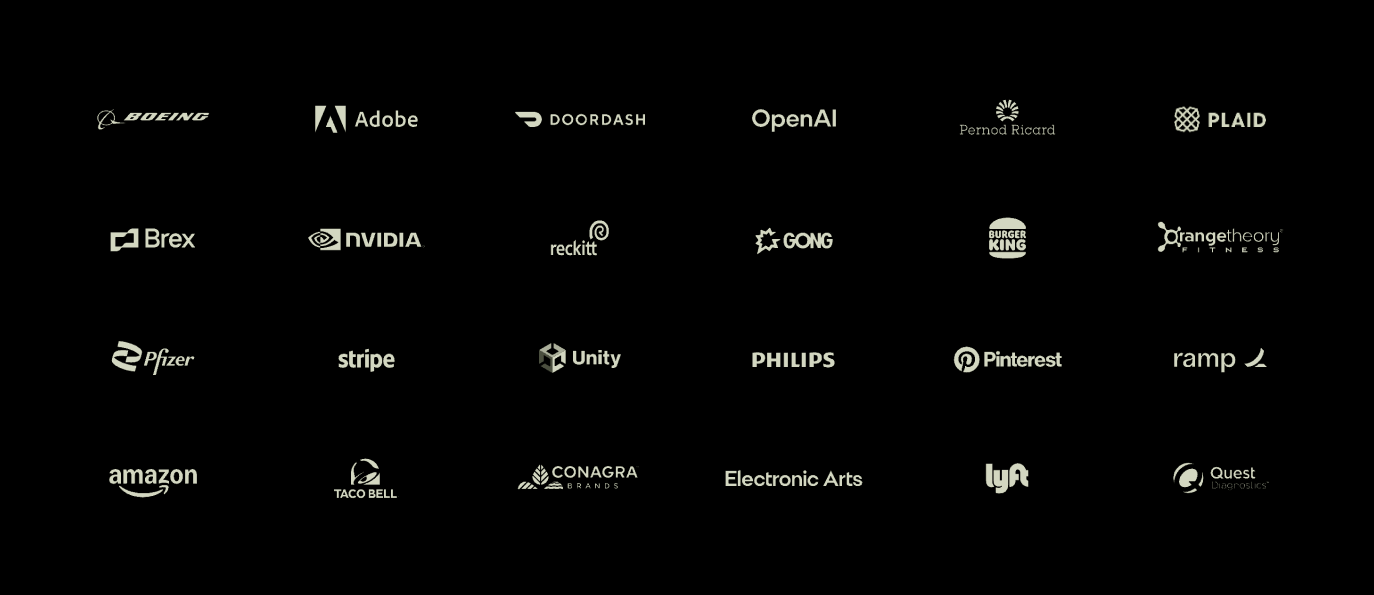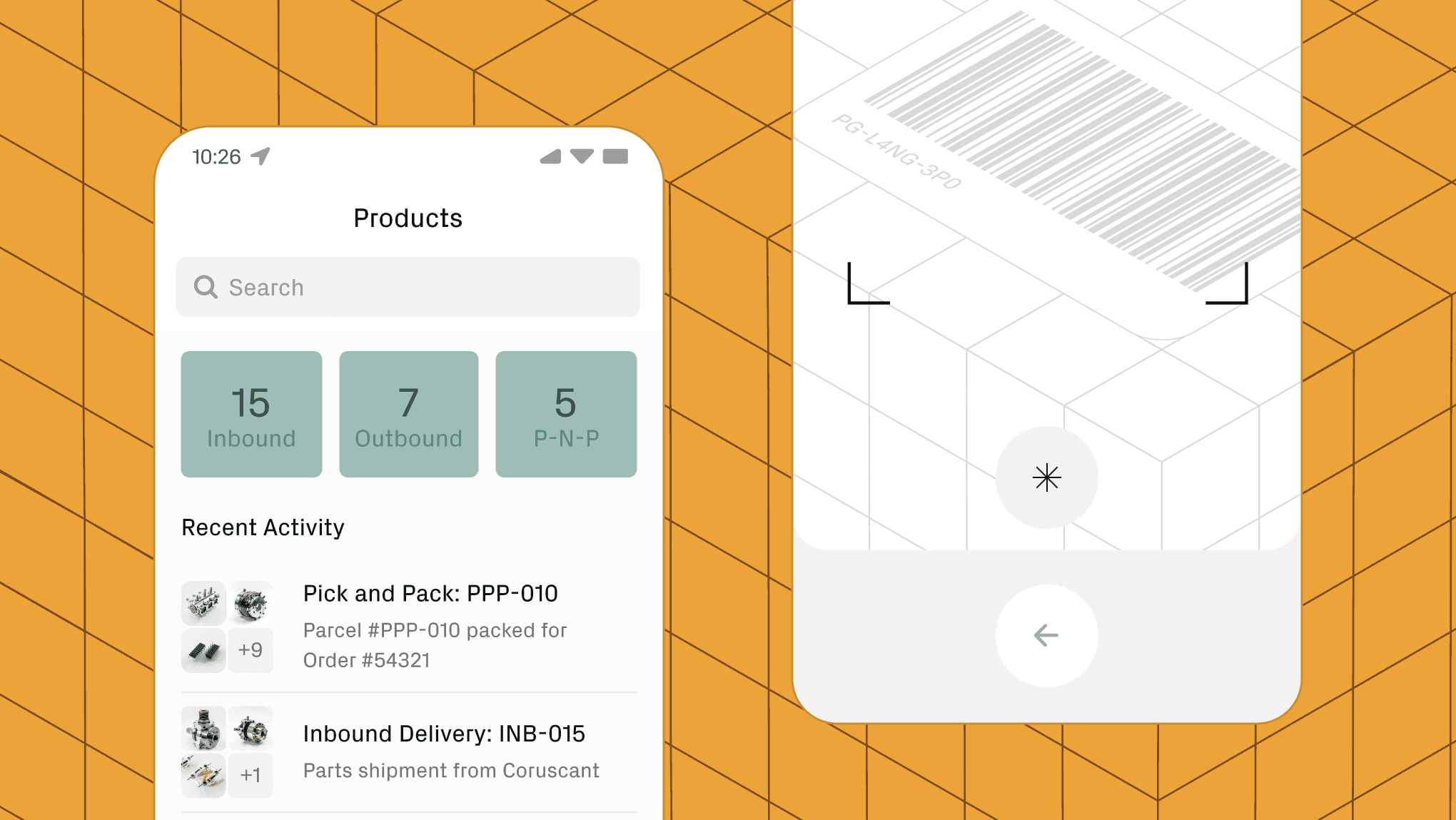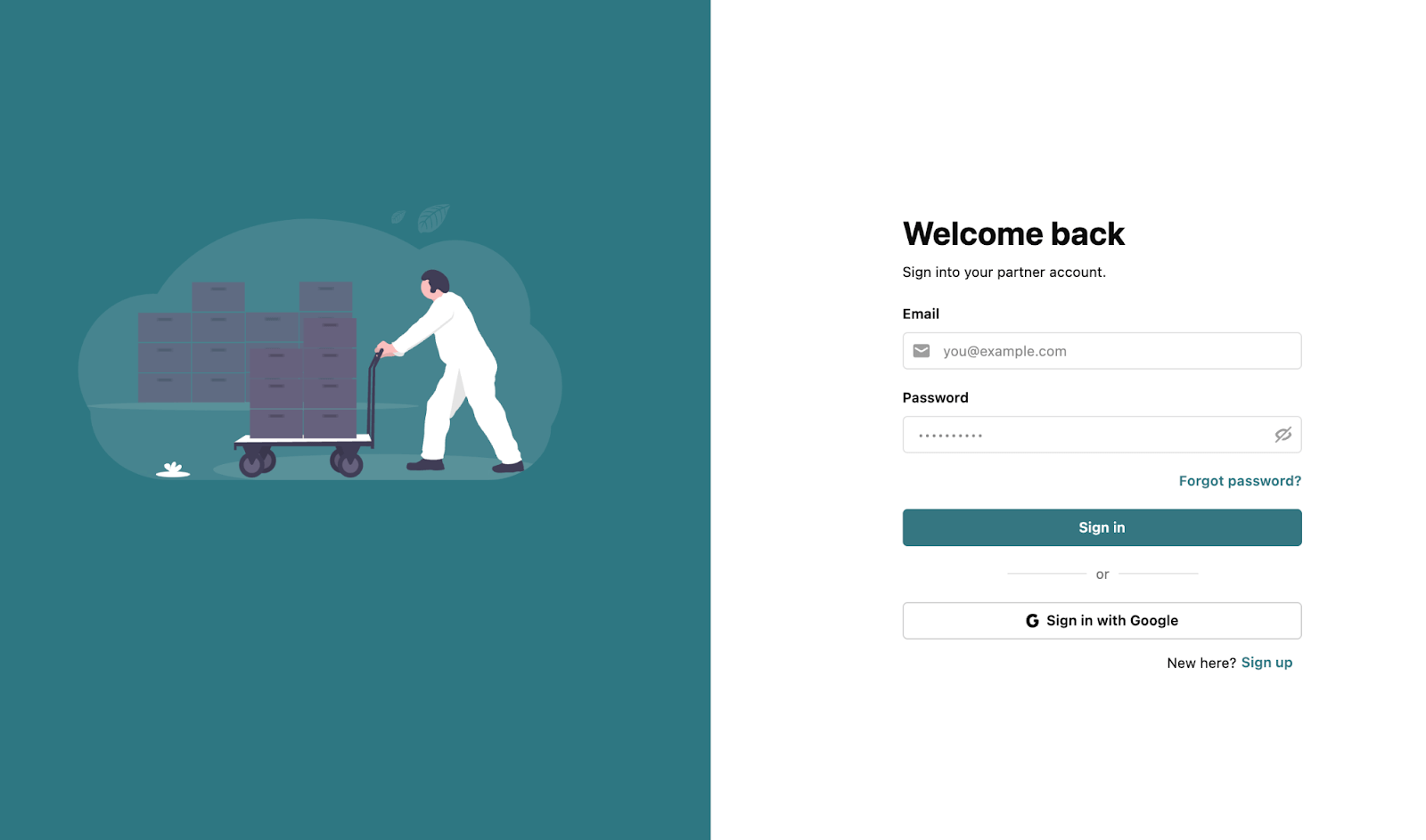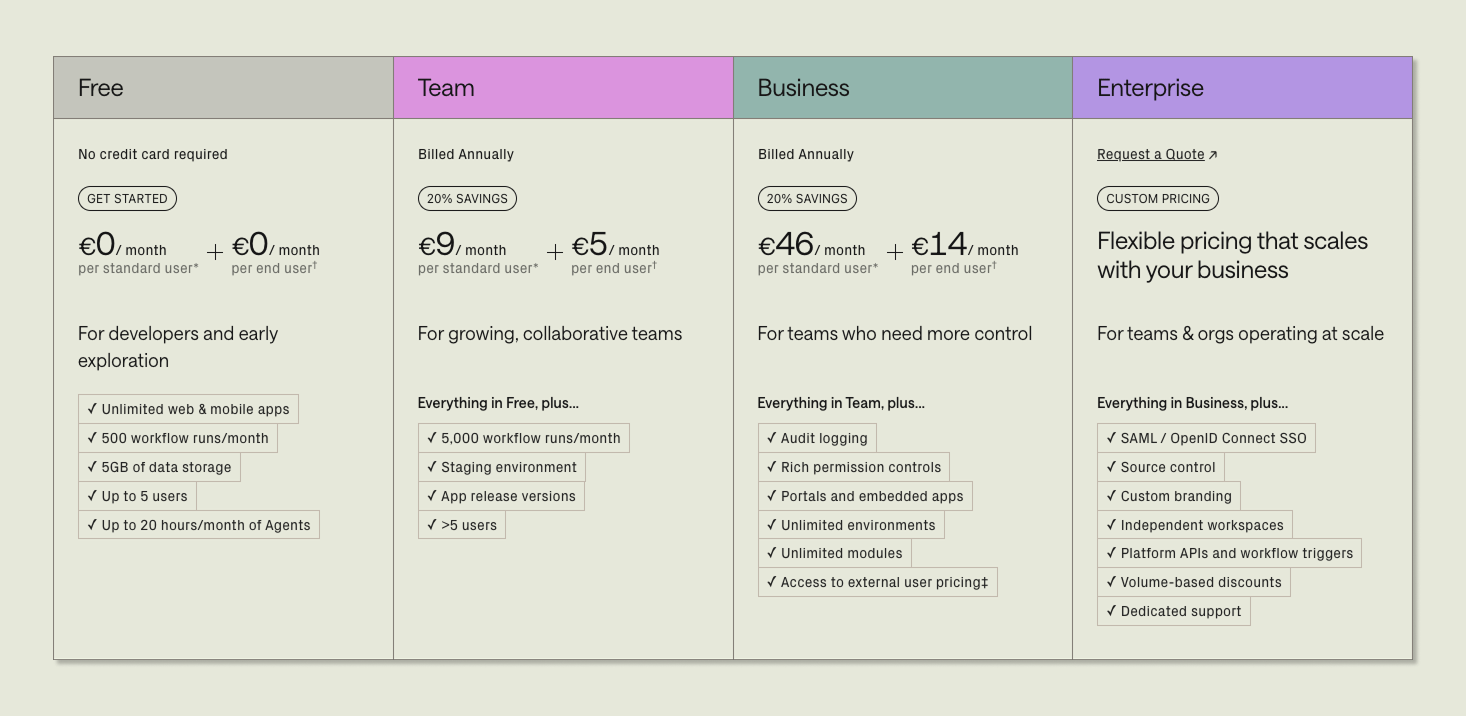Where does Retool shine?
- Internal tools like admin panels, dashboards, planning modules, approval workflows.
- Operational systems for managing orders, inventory, or field teams.
- Secure portals where customers or partners can access orders, documents, or follow-up tasks.
- AI-enabled tools that combine structured data with language model capabilities.
When isn’t Retool the right choice?
- Public-facing marketing sites or large-scale e-commerce platforms are not a good fit, as Retool is not built for high-traffic, content-heavy experiences.
- Design-first applications that prioritise pixel-perfect branding over speed and integration are better suited to other tools.
- Purely no-code projects may struggle, since Retool is designed for teams comfortable writing at least some JavaScript or SQL.
Who uses Retool?
It’s built for teams that need to turn ideas into working software fast, without giving up control over data, governance, logic, or integrations.
- Developers and technical teams who need to deliver reliable tools quickly.
- Startups and SMBs looking for a scalable platform that’s flexible enough to iterate fast.
- Enterprises that require governance, SSO, and self-hosting capabilities.
- Teams exploring AI who want seamless LLM integration and the ability to run task-focused agents.

How to build a Retool app in 5 steps
- Connect your data: Postgres, MySQL, REST, GraphQL, or Retool’s managed PostgreSQL database.
- Design your UI: choose from 100+ components like tables, forms, charts, and lists.
- Customise the logic: add validation, conditional rules, and theming for a consistent look.
- Add code where it matters: SQL, JavaScript, or Python for business logic or transformations.
- Deploy instantly: to Retool Cloud or your own infrastructure with full permission controls.

What does Retool offer beside app building?






Retool as the application layer for AI
Retool acts as the application layer between your AI models and your business operations. It connects seamlessly to your data, lets you choose the best model for each task, and gives you the tools to build secure, production-ready applications. Whether it’s natural-language SQL queries, automated document processing, or agentic workflows that execute multi-step tasks, Retool makes AI usable where it matters most: inside the tools your team actually works with.
You’re not locked into a single provider. Retool is model-agnostic and works with OpenAI, Anthropic, Google, Amazon, or your own fine-tuned models. You can enrich prompts with real business context through vector databases and data integrations, and monitor or adjust your AI agents from a single dashboard.
In short, Retool doesn’t just add AI to your apps, it gives you the structure, governance, and flexibility to turn AI into a true operational advantage.
How do I maintain Retool apps?
With Retool, that burden largely disappears. Applications continue running without constant intervention. This means you can invest your budget in what truly matters: building new features that create real impact. Retool’s stability ensures clients get long-term value from their apps without repeatedly investing in maintenance.
How does pricing work?
A Business license gives you access to valuable extras like release management, audit logging, advanced permission management, and the ability to embed apps externally. This makes it ideal for professional teams that want to scale without immediately moving to an enterprise setup.
The Enterprise license adds even more capabilities such as single sign-on (SSO), custom onboarding flows, Git integration, and extended governance and compliance features. These are particularly relevant for larger organisations or multi-team deployments.
Retool uses a user-based pricing model, where both builders and end users count. The total cost depends on your user structure and how broadly you want to use the platform.
As an official Retool Agency Partner, Sixth Generation helps you choose a model that fits your use case and organisation.

Why do businesses choose Retool?
Some of the highlights:
- Retool offers hundreds of components and templates that help you accelerate delivery.
- It connects to nearly any database or API, making integration straightforward.
- It takes a security-first approach with SSO, audit logs, RBAC, secrets management, and self-hosting options.
- It serves as an application layer for AI, allowing you to plug in LLMs and use built-in AI agents.
- It is mobile-friendly with offline support.
- You will get the most out of Retool if you have basic JS/SQL knowledge.
- Its design flexibility is more limited than dedicated design-first tools.
- It is best suited for business applications rather than public-facing e-commerce or marketing sites.

How does Retool compare to other low-code platforms?
- Quick to build
- Citizen development
- Strong RBAC with Entra ID / Dataverse
- Deep Microsoft 365 integration
- Not for complex scenarios
- Governance can be cumbersome at scale
- Proprietary languages
- Restrictive advanced integrations
- Fast to develop
- Supports custom JavaScript / SQL
- Can integrate with nearly any database or API
- Enterprise-grade governance and security layer
- Requires some coding knowledge
- Less suited for pure consumer-facing experiences
- Visual customisation handled through theming rather than custom design systems
- Fully customisable
- Pixel-perfect UI
- Strong enterprise features
- Broad scalability
- Resource-intensive to build and maintain
- Vendor lock-in risk
- May require re-structuring or expanding engineering teams
- Quick to build
- Citizen development
- Strong RBAC with Entra ID / Dataverse
- Deep Microsoft 365 integration
- Not for complex scenarios
- Governance can be cumbersome at scale
- Proprietary languages
- Restrictive advanced integrations
- Fast to develop
- Supports custom JavaScript / SQL
- Can integrate with nearly any database or API
- Enterprise-grade governance and security layer
- Requires some coding knowledge
- Less suited for pure consumer-facing experiences
- Visual customisation handled through theming rather than custom design systems
- Fully customisable
- Pixel-perfect UI
- Strong enterprise features
- Broad scalability
- Resource-intensive to build and maintain
- Vendor lock-in risk
- May require re-structuring or expanding engineering teams
Quick answers
Yes, basic knowledge of JavaScript and SQL will allow you to unlock Retool's full potential.
What types of apps can I build with Retool?
You can create business applications to help teams work more efficient, mobile apps to help people on-the-go, secure customer portals to share information with clients, and AI powered apps and agents.
Does Retool offer strong security features?
Yes, Retool includes access control, audit logging, single sign-on and options for self-hosting.
Can I integrate AI in Retool apps?
Retool works with major large language models, supports vector search, and allows you to build both pre-built and custom AI agents.
How Sixth Generation helps
As an official Retool Agency Partner, we help you:
- Evaluate your needs and pick the right setup.
- Design the architecture, data flows, and integrations.
- Build apps that work today and adapt to tomorrow.
- Train your team to use Retool effectively.
- Provide ongoing support and scaling guidance.






